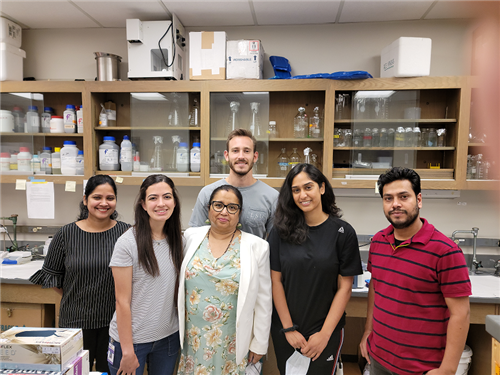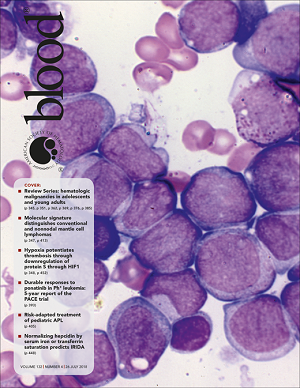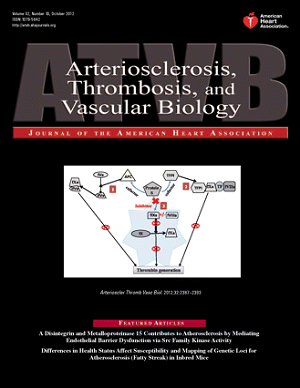Welcome to the Majumder Lab

CONTACT INFORMATION
Email: rmajum@lsuhsc.edu
Phone: (504) 568-2810
Alt. Phone: (504) 568-2861
Address: 1901 Perdido St.
Box P7-2
New Orleans, LA 70112
Office Location: MEB 7114
CURRENT MEMBERS:


Tina Nguyen, MS - Lab Technician Devin Melancon - Student Worker
Current Research:
Our lab primarily focuses on the molecular mechanisms that are responsible for maintaining normal hemostasis. In particular, we study the structure-function relationships of plasma coagulants and anticoagulants. Currently, the lab is pursuing research in the following areas: (1) determining the physiological role of an important plasma glycoprotein, Protein S (PS), and (2) capitalizing on our discovery of a novel regulatory function of PS towards Factor IXa (FIXa) to test whether inhibiting PS will mitigate the effects Hemophilia B that results from a deficiency or dysregulation of FIXa.
Our research utilizes a wide spectrum of experimental approaches and methodology, including molecular modeling, creation of mutant proteins, protein-protein interaction assays, blood clotting assays, and animal models.
PS is a vitamin K-dependent plasma glycoprotein synthesized in the endothelium. Deficiency of this protein is one of several risk factors for thrombophilia, and can increase the risk of abnormal blood clotting such as Deep Vein Thrombosis (DVT) and Pulmonary Embolism (PE). In severe cases of PS deficiency, infants develop a life-threatening blood clotting disorder called purpura fulminans soon after birth.
We recently discovered a previously unknown role of Protein S in regulating the clotting FIXa, i.e., thrombin generation inhibition of FIXa. The inhibition of thrombin generation via FIXa by Protein S is being exploited to more effectively treat Hemophilia B. Given that Hemophilia B results from a deficiency in FIXa, this enzyme converts prothrombin to thrombin, which forms a blood clot at an injured site. Hemophilia B is treated by supplementation of FIXa to replace the missing or inactive FIXa in affected individuals by infusion. However, the infused FIXa has a limited therapeutic lifetime, likely in part, because it is inhibited by Protein S. Thus, our studies are directed towards developing agents that inhibit the activity of Protein S. Such agents are expected to increase the therapeutic efficacy of FIXa replacement therapy for Hemophilia B patients. We are using mouse models to assess whether one inhibitor of Protein S, a specific Protein S antibody, prolongs FIXa therapy. In addition, we are collaborating with Dr. Bruce Sullenger (Duke University) to produce oligonucleotide aptamers that inhibit PS activity with high affinity and specificity. Aptamer-mediated inhibition of PS is preferred over antibody-based inhibition because aptamers have low or no immunogenicity compared with proteins. Aptamers are substantially easier to synthesize in large, chemically pure quantities. Aptamer-target stoichiometries and affinities are easily measured to determine appropriate drug doses; and unlike proteins, aptamers can be easily modified chemically to enhance their plasma lifetimes.
Protein S has been the subject of research by numerous investigators for over 30 years. However, the published studies have been contradictory and confusing regarding the true function of Protein S in blood coagulation. Importantly, we have been able to creatively avoid artifacts of experimental design that we discovered to have plagued many earlier studies. Thus, our work will further clarify the biochemistry and physiology of Protein S, and our findings will have direct applications in creating new antithrombotic drugs and agents to ameliorate Hemophilia.
FUNDED GRANTS AND CONTRACTS:
National Institutes of Health
A Mechanistic Study to elucidate the role of Protein S in elevating the risk of Thrombosis
in Obese, Pre-menopausal women,” 1R01HL151613-01A1
01/15/2021- 01/14/2025, $650,000 yearly
National Institutes of Health
A Novel Regulatory Role of Protein S in Blood Coagulation,” 1R01HL118557-01A1
09/01/2014-07/31/2018 and 08/01/2018-01/31/2021, $250,000 yearly
American Society of Hematology Bridge Funding
05/01/2019-12/31/2020, $200,000 yearly
Leveraging Innovation for Technology Transfer (LIFT2) Grant
The Board of Supervisors of Louisiana State University
Development of Peptide Mimic of Protein S, a Physiological Anticoagulant for Antithrombotic
Therapy
05/15/2020-05/15/2021, $50,000 yearly
LSU Health Science Center Alumni Foundation
COVID-19 Intramural Research Program
10/07/2020-10/06/20221, $6000 yearly
Featured Journal Covers


SELECT PUBLICATIONS:
“Modulation of protein S and growth arrest specific 6 protein signaling inhibits pancreatic
cancer cell survival and proliferation.
Pilli VS, Datta A, Dorsey A, Liu B, Majumder R.
Oncol Rep. 2020 Oct;44(4):1322-1332. doi: 10.3892/or.2020.7689. Epub 2020 Jul 15.
PMID: 32945517 Free PMC article.
“COVID-19: a probable role of the anticoagulant Protein S in managing COVID-19-associated
coagulopathy.
Chatterjee S, Sengupta T, Majumder S, Majumder R.
Aging (Albany NY). 2020 Aug 19;12(16):15954-15961. doi: 10.18632/aging.103869. Epub
2020 Aug 19.
PMID: 32826388 Free PMC article.
“Regulation of venous thrombosis by platelet protein S.
Majumder R.
Blood. 2020 May 28;135(22):1922-1923. doi: 10.1182/blood.2020005676.
PMID: 32463885 Free PMC article.
“Ether lipid metabolism by AADACL1 regulates platelet function and thrombosis.
Holly SP, Gera N, Wang P, Wilson A, Guan Z, Lin L, Cooley B, Alfar HR, Patil RG, Piatt
R, Leisner TM, Bergmeier W, Majumder R, Parise LV.
Blood Adv. 2019 Nov 26;3(22):3818-3828. doi: 10.1182/bloodadvances.2018030767.
PMID: 31770438 Free PMC article.
“Protein S in preventing thrombosis.
Fricke DR, Chatterjee S, Majumder R.
Aging (Albany NY). 2019 Jan 25;11(3):847-848. doi: 10.18632/aging.101798.
PMID: 30683834 Free PMC article.
Hypoxia downregulates protein S expression.
Pilli VS, Datta A, Afreen S, Catalano D, Szabo G, Majumder R.
Blood. 2018 Jul 26;132(4):452-455. doi: 10.1182/blood-2018-04-841585. Epub 2018 May
21.
PMID: 29784640 Free PMC article.
“Anticoagulant Protein S Targets the Factor IXa Heparin-Binding Exosite to Prevent
Thrombosis.
Plautz WE, Sekhar Pilli VS, Cooley BC, Chattopadhyay R, Westmark PR, Getz T, Paul
D, Bergmeier W, Sheehan JP, Majumder R.
Arterioscler Thromb Vasc Biol. 2018 Apr;38(4):816-828. doi: 10.1161/ATVBAHA.117.310588.
Epub 2018 Feb 1.
PMID: 29419409 Free PMC article.
“Padua FIXa resistance to Protein S and a potential therapy for hyperactive FIXa
Plautz WE, Chattopadhyay R, Goldfeld EI, Samelson-Jones BJ, Pilli VS, Campello E,
Datta A, Arruda VR, Simioni P, Majumder R.
Thromb Res. 2018 Oct;170:133-141. doi: 10.1016/j.thromres.2018.08.018. Epub 2018 Aug
27.
PMID: 30189336
“Protein S: a Multifunctional Anticoagulant.
Dorsey A, Pilli VS, Fried H, Majumder R.
Biomed Res Clin Pract. 2017 Dec;2(5):10.15761/BRCP.1000151. doi: 10.15761/BRCP.1000151.
Epub 2017 Nov 20.
PMID: 30148214 Free PMC article. No abstract available.
Mini-review on "A novel one-step purification of mouse factor IX
Choudhury S, Plautz WE, Zacarias C, Majumder R.
J Rare Dis Res Treat. 2016;1(2):8-10.
PMID: 27819071 Free PMC article.
“Inhibition of intrinsic Xase by protein S: a novel regulatory role of protein S independent
of activated protein C.”
Chattopadhyay R, Sengupta T, Majumder R.
Arterioscler Thromb Vasc Biol. 2012 Oct;32(10):2387-93.
PMID: 22904276.
